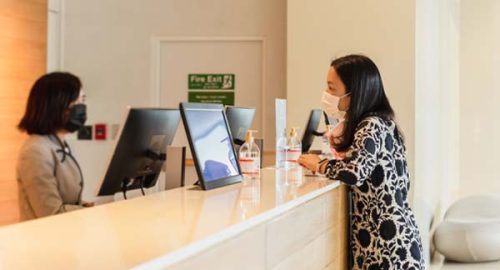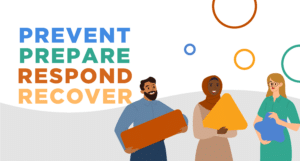Listen to the blog (7 minutes)
A first line of defense in keeping unwanted visitors out is knowing exactly who is trying to gain access to your buildings. Using a visitor management system for schools is the only way to confidently confirm a visitor’s identity and know whether they should be allowed on campus or to pick up a student for early dismissal. A visitor management system also makes students and staff feel safer, as they know the school is actively screening and authorizing all entrants.
Below are 5 features of K-12’s most trusted visitor management system. As you evaluate systems for your school, consider this information—as well as the features listed in Part 1 of this blog series—to make sure you pick the right system for your school community.
1. Safeguard your visitor, student, and staff data
Maintaining and protecting your visitor, staff, and student data is of the utmost importance. First, your system should only capture the minimum data needed to conduct the screenings and keep accurate reports. This information includes the visitor’s first name, last name, and date of birth, but not details like their social security number. Your system should also have robust user access and permission management structure, ensuring that only authorized users have access to data. The best systems leverage each district’s active directory or directory management systems for enterprise identity management.
Your provider must follow the latest security processes and procedures to protect the entire system, like using firewalls, intrusion prevention systems, host integrity monitoring, and port filtering.
2. Help you safely stay open during and beyond COVID-19
Keeping your school community healthy and safe involves screening all entrants for COVID-19 and denying entry to anyone with exposure risk. Your visitor management system should enable you to do just that with custom health screening questionnaires during visitor check-in. All the data from these screenings should be captured so that school administrators can have the visibility needed to make operational decisions. Schools can also ensure visitors on campus are vaccinated against COVID-19 by designating custom fields as verified vaccination status fields.
Contact tracing is another crucial strategy to stop COVID-19’s transmission. Your visitor management system should include contact tracing reports, giving you the data needed to efficiently contact trace. The report should detail the visitor’s information, including when they signed in and out of the system and their contact information. This will help you verify and contact those who were potentially exposed.
3. Provide assisted or kiosk options
Each district, and even each school within the district, may require different check-in configurations. The best provider can offer you the flexibility to choose between assisted systems (those that are used at your front desk and managed by a school employee) and kiosk stations for self-service.
Kiosks allow visitors—as well as students, staff, and guardians at the school’s discretion—to sign in and out of the system with minimal staff assistance. Kiosks should screen each entrant and alert the front desk staff to review/confirm any alerts. Another advantage of using kiosks is that they help eliminate congestion in the lobby and reduce direct contact with the staff. Both benefits reduce the number of germs spread.
4. Offer customization to your specific needs and protocols
Your visitor management system should give you the flexibility to customize the software to your needs. This customization can include what fields are required during visitor sign-in, what destinations are available, and the reasons for entry. The system should also allow you to integrate with a web camera to capture a visitor photo if the individual does not have an ID.
This also includes giving you complete control over what custom databases to include in your system. Your system should allow you to create as many lists as needed to keep your students and staff safe. Many schools create custom databases that include:
- Non-custodial guardians, parents, or family members with custodial restrictions
- Individuals with restraining orders that restrict contact with a student or staff member
- Expelled or suspended students
- Flagged persons who have previously threatened to injure or commit crimes against students, staff, or the school buildings
- Individuals who have committed crimes or conducted illegal activities on or near school grounds
5. Integrate with your emergency management and volunteer management systems
The most powerful visitor management systems seamlessly integrate with your emergency management and volunteer management systems to give you complete control over your school safety lifecycle. In the event of an emergency, this integration enables you to account for every visitor (including contractors, volunteers, vendors, substitutes, guardians, etc.) who is signed into the visitor management system. And, you’ll instantly know if any students were dismissed before the emergency was initiated. Guardian photos captured in your visitor management system will accelerate approved guardian verification when you are reunifying guardians and students.
“The idea of multiple integrated security modules indicates the versatility of the system, and we really value the fact that we can rely on one trusted source for all our safety technology.”
– Laramie School District 1, WY
Follow Visitor Management Best Practices
A powerful visitor management system is your first line of defense against unsafe entrants. Choosing the right system—and developing the policies for using that system—does not have to be cumbersome. When you partner with the industry leader, it can make all the difference.
With nearly 20 years of experience and partnerships with over 35,000 K-12 schools, Raptor keeps updated on the latest best practices and happily shares our research and recommendations to help schools evolve as safety needs change. Read these best practices in our Guide to K-12 Visitor Management: Best Practices for Year-Round Safety.





